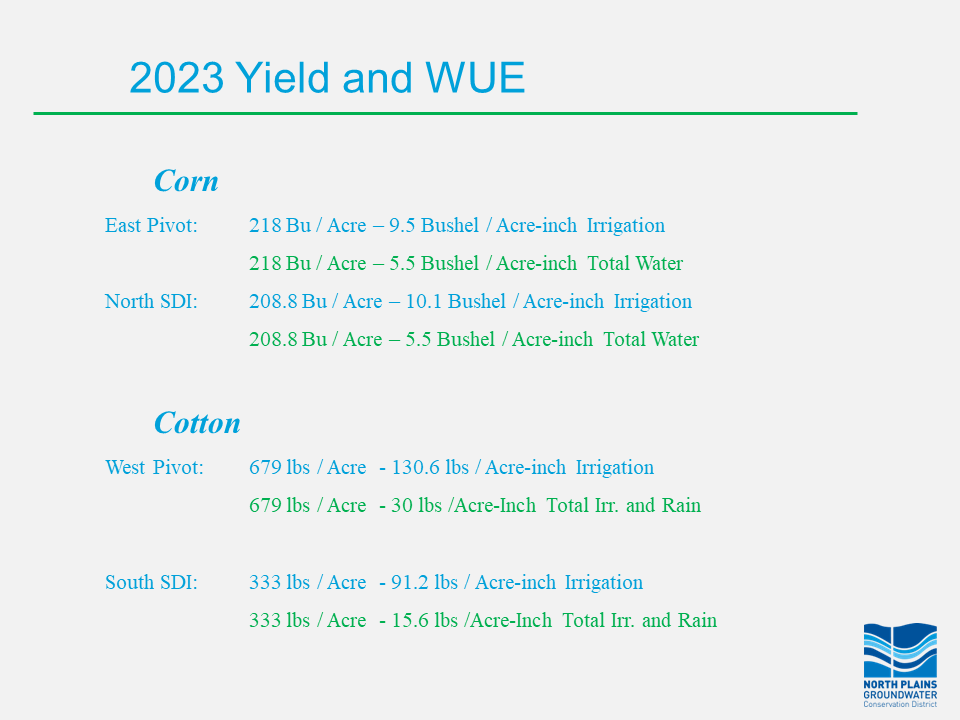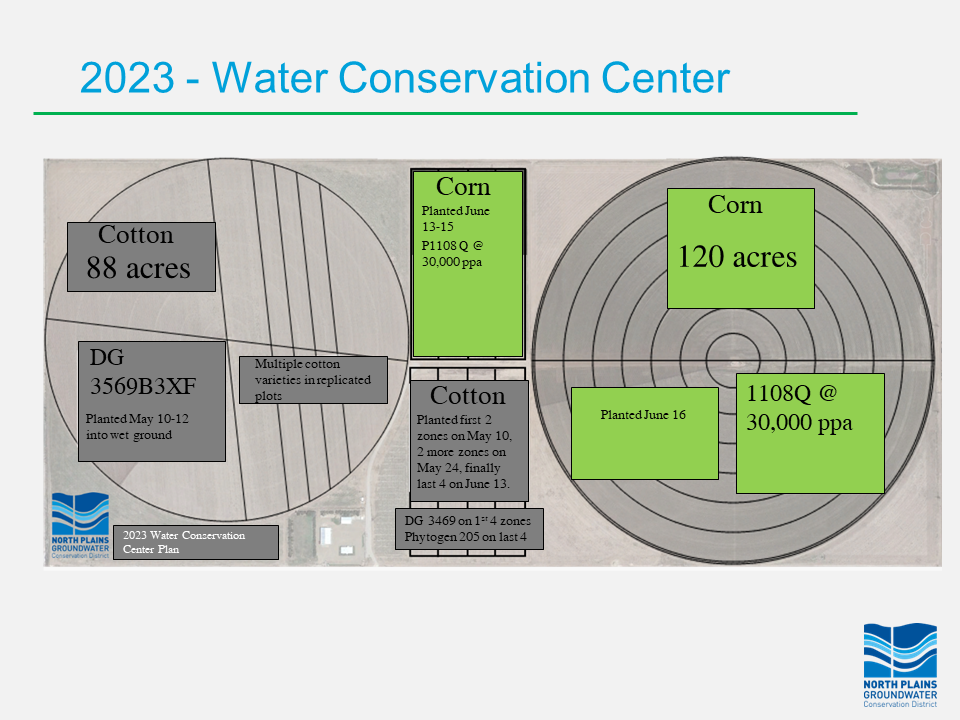WCC 2023 Demonstration Update: Salvage Operation from the Beginning
We all know that when agriculture is your business, especially in the northern Panhandle of Texas, you never complain about rain, anytime you get it. However, based on the plan we started the 2023 growing season with, we did get too much rain, at the wrong time. Nevertheless, If we look back on the 2023 season, keeping the “rain is always good” philosophy in mind, maybe we could have made some adjustments that would have allowed us to make better use of the extra rain we did get. More on that later.
Even before planting, the demonstrations turned into a salvage operation. Based on three consecutive dry winters, our farmer/operator, engineer, and crop consultant all recommended substantial pre-watering, which was applied at a rate of 5.2 inches under both pivots and 2.2 inches in both drip plots. However, before any of those crops could be planted, the rain started in early may and dropped 11.25 inches in approximately one month. This unexpected rainfall caused challenges with several aspects of the demonstration plan.
First, the timing of the rain substantially disrupted the scheduled dates for planting. The rains interfered with both cotton and corn, altering a planting date demonstration for cotton.
Despite the gloomy outlook, a portion of the cotton was actually planted on time. Cotton was planted on schedule on the West Pivot from May 10-12th into wet ground. In addition, the first two zones of the south drip field were also planted in cotton on schedule on May 10th. However, the initial plan to plant a pair of zones of cotton on the drip field each a week apart was rained-out when the ground was too wet to plant the second two zones on May 17th. The second pair were planted on May 24 and the final two pairs of cotton zones could not be planted until June 13th. A shorter season variety was planted to try to make up for the later planting date, but yields were still not good.
The corn drip fields were also planted fairly timely from May 13-15th. However, the conditions did not allow for the East Pivot corn to be planted until June 16.
Second, the rains caused a major obstacle to irrigation efficiency. Had we had a crystal ball, we would have not chosen to apply pre-water to the crops. Since we did not know we would be receiving enough rainfall to fill the profile early in the season, significant pre-water was applied that we could not recover.
We did not irrigate cotton again since the cotton stayed wet throughout the rest of the season. Corn was a different story. Even with the extra water in the soil from pre-water and rainfall, the weather in July and August got so hot we were unable to turn-off to try to save some of the irrigation that was applied pre-season.

This graph shows the yield and Water Use Efficiency (WUE) for both the Corn and Cotton pivot and drip fields. While the additional rain helped with the WUE for bu/per acre inch of irrigation on the corn, the WUE for total water on corn suffered as the plant failed to make use of the additional water to produce additional yield. WUE was on the cotton was poor since the plants never responded enough to generate much yield.
Third, based on the yields and water use numbers the untimely rains also negatively affected crop development in a several ways. The consensus was that the soggy conditions were not ideal for cotton development, causing it to stop maturing. Combined with some late planting dates, high winds, hail, heavy weed pressure and low growing degree days just after emergence neither crop responded well. Former Demonstration engineer, Nich Kenny reported soil moisture sensors showed no significant activity for either crop until August.
Though the excessive rain at planting and other obstacles to the season certainly created problems that negatively affected the District’s goals, analysis and interpretation of the results have led to some alternative strategies to consider. Kenny proposed that substituting sorghum or another forage crop for the late-planted cotton could have allowed for better use of the excess water that was available. In addition, Kenny suggested chopping the late planted corn could have saved some irrigation and improved overall irrigation efficiency.
While the challenges were many in 2023, there were some positives regarding the 2023 season at the WCC. For example, the corn yields, while not up to the usual standards of the Water Conservation Center, were acceptable. Also, because of the higher-than-average rain totals, the fields will start 2024 with moisture in the profile to contribute to the early season moisture demand. And, like every growing season, we learned some lessons that will hopefully make us better prepared for the future.

